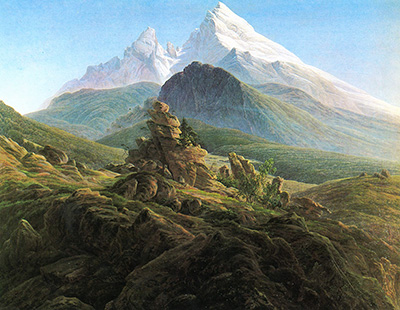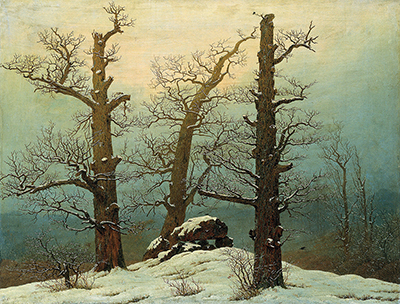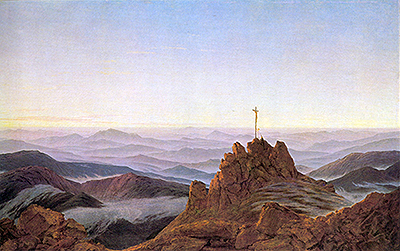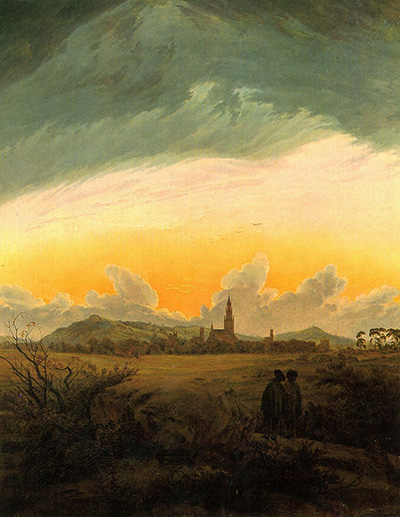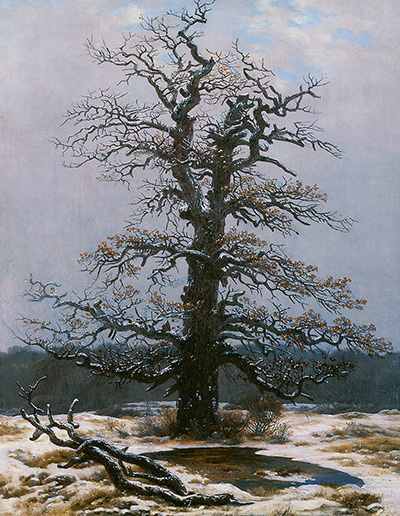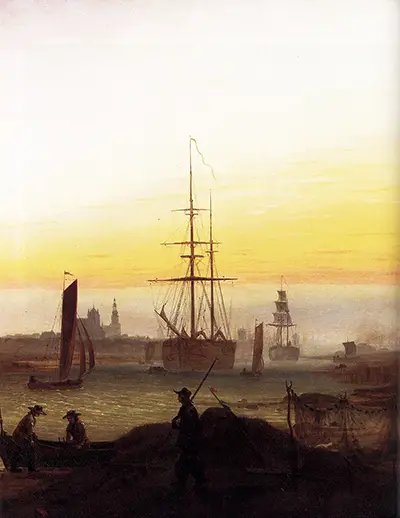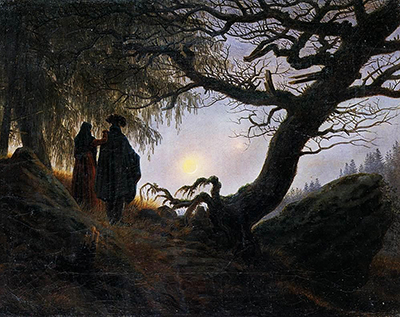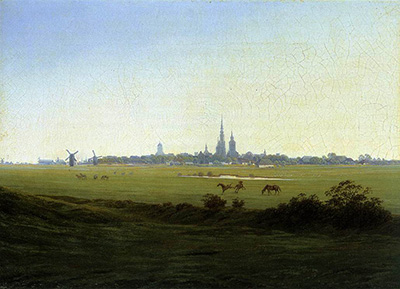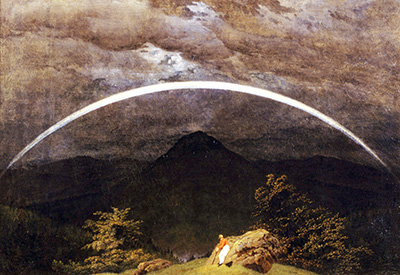Caspar David Friedrich was a German Romanticist artist who specialised in the medium of oil painting.
His signature style captured humanity alongside nature in some awe-inspiring displays of symbolism within carefully crafted landscape scenes.
Role within the Romanticist Movement
Friedrich's paintings were most certainly amongst the earliest examples of the Romanticist period, which itself peaked as a movement between 1800 and 1850. This German painter used noticebly less detail across his canvases that other related artists, attempting to communicate the power of nature and its hold of humanity. His figures tend to be small in comparison to the rest of his compositions and they would also have their back turned to the viewer, giving a feeling of anonymity and mystery.
Varied Oeuvre
He would also call on religious themes from time to time, including local architecture and committed followers such as monks. The artist tapped into a changing German society which was starting to shift it's priorities and he was quickly able to build up a following of support, both academically and also from several powerful donors.
It was as early as the start of the 19th century that artists around Europe were starting to become concerned about the impact of humanity on the world and they reflected this in their work. JMW Turner and John Constable held similar beliefs to Friedrich and started to promote the genre of landscape painting, which had previously not been treated with the same respect as figurative and religious-based art.
Artistic Influences
Claude Lorrain was somewhat of an influence on them, and in turn they would inspire huge numbers of artists around the world, including the French Impressionists led by the extraordinary Claude Monet. In the 21st century many are completely unaware that landscape painting has not always been held in the same regard as it is today. Artists like Friedrich were crucial in making this the case for the first time.
Previously to the likes of Friedrich, landscape painting perfectly existed, but would always be used as a supporting element to the main focus of a painting. This was the case in both the Renaissance and Baroque periods, with some of the best examples of this being Giorgione's The Tempest, Hieronymus Bosch's The Garden of Earthly Delights, Titian's Bacchus and Ariadne and, perhaps most famously, Pieter Bruegel's Hunters in the Snow.
Art history is essentially a cycle from one art movement to the next, taking inspiration from what has gone before and then helping to shape the future. In most cases, new artistic styles are disrepected initially, before the best are later accepted by academics and promoted across the mainstream.
Switch to Portraiture
The artist completed a number of privately-commissioned portraits that flies in the face of some expectations of his professional struggles during his own lifetime. He was successful but it is still fair to say that his reputation rose after his death, mainly due to the rising interest in landscape art. His artistic connections have also never been questioned, with many famous names capturing his own portrait within their work.
Friedrich had strong facial features which developed in his later years. Alphonse de Labroue, for example, completed a notable portrait of him that was only recently uncovered and correctly identified. Gerhard von Kügelgen completed a highly memorable portrait of him in around 1810–1820 which conveys the strong, serious character of this artist.



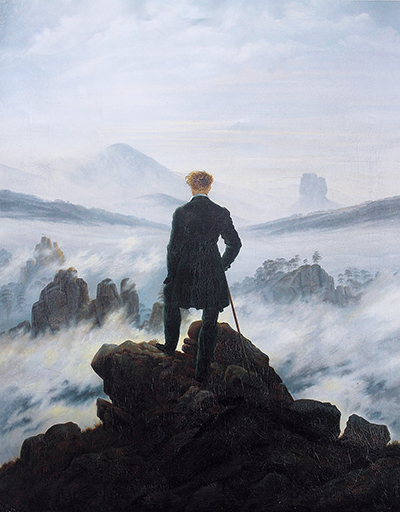
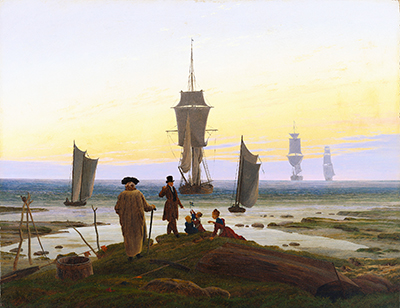
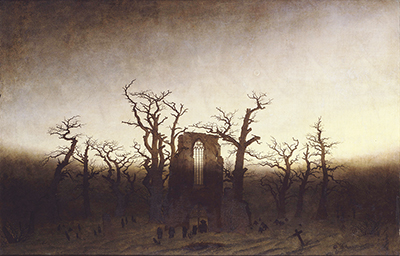
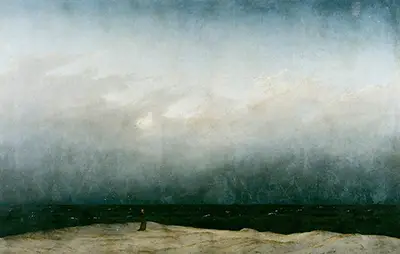
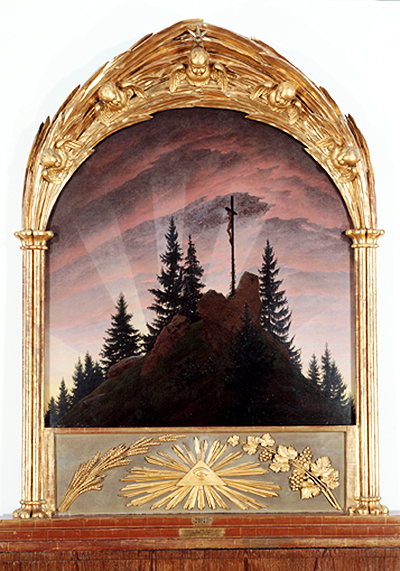
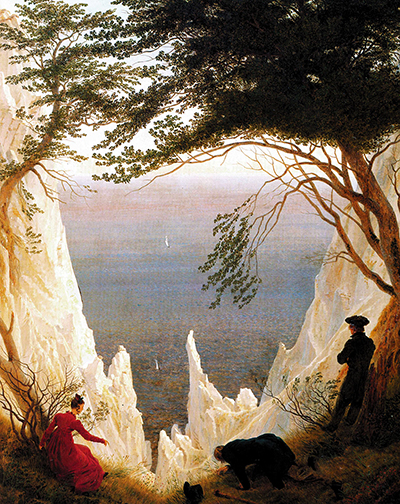
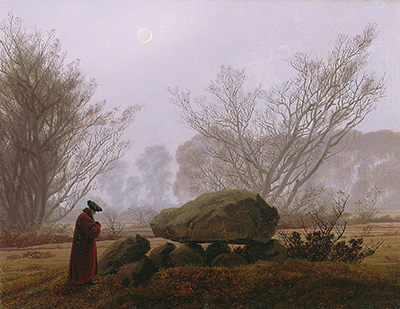
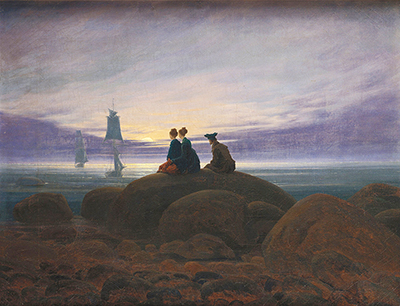
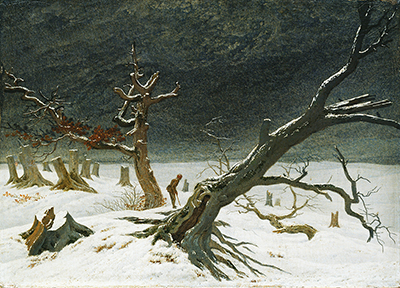
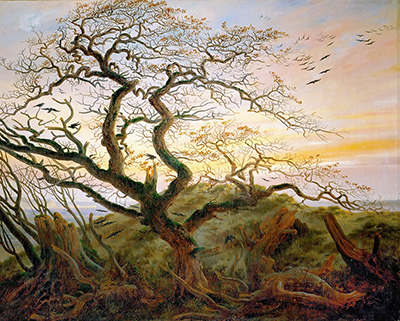
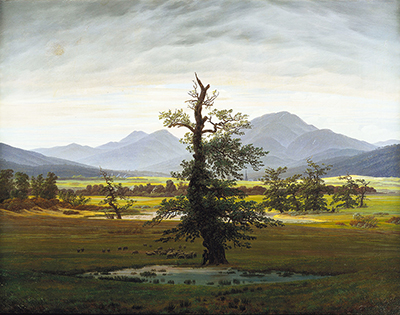
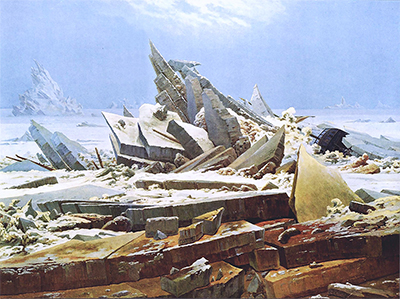
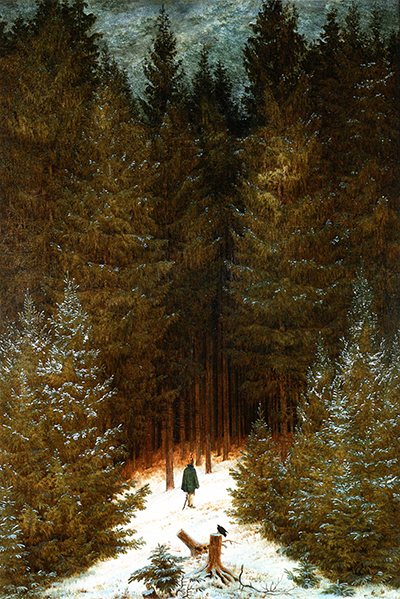
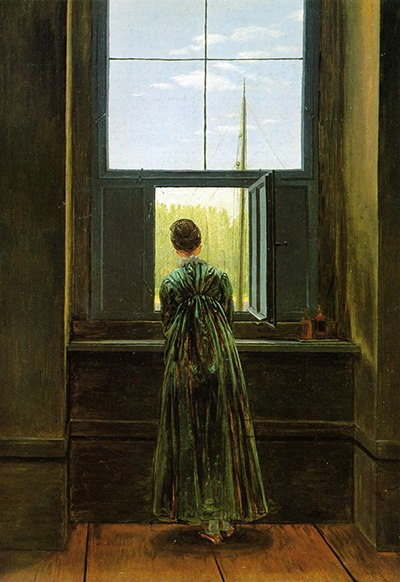
 Caspar David Friedrich.jpg)
